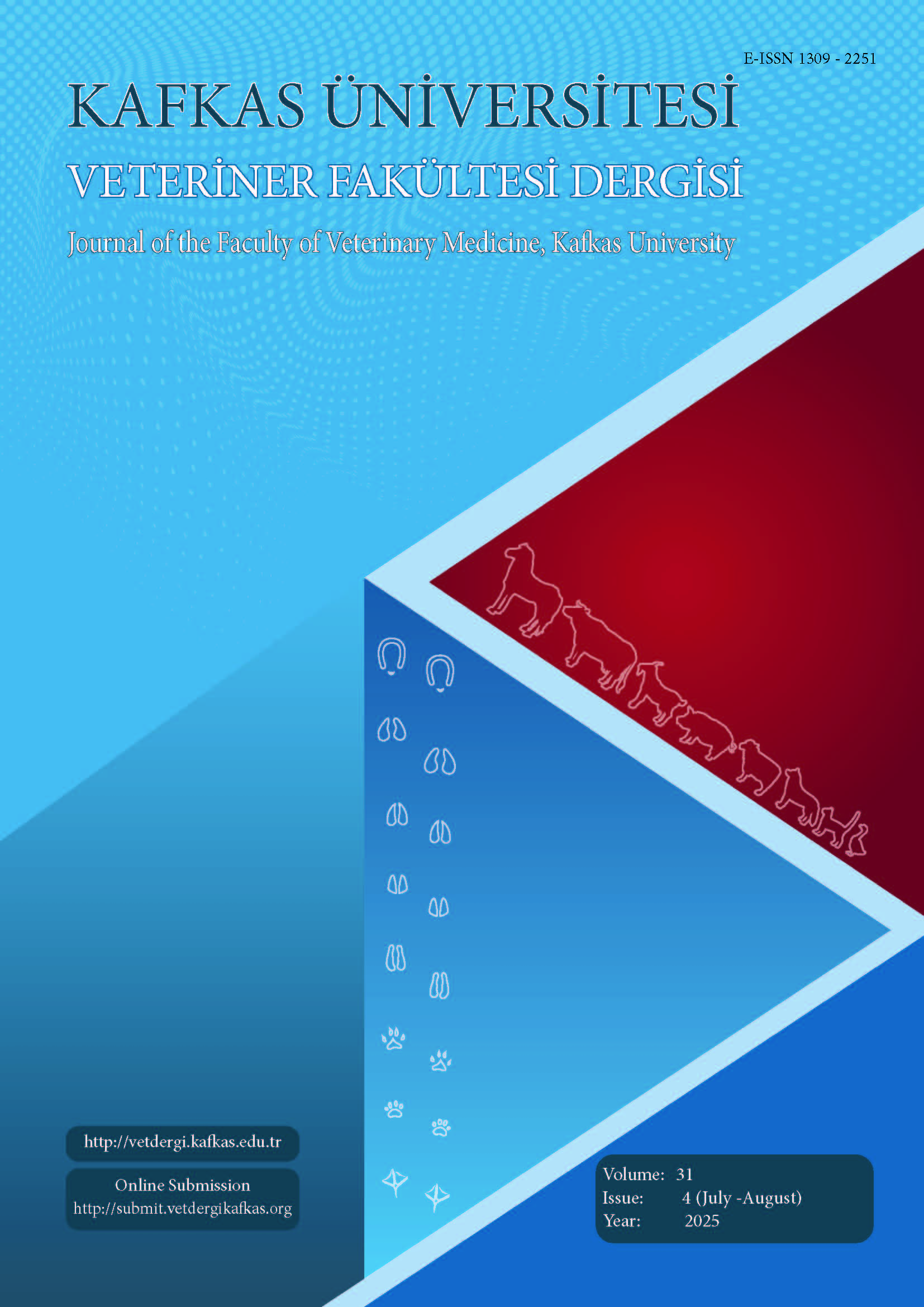
This journal is licensed under a Creative Commons Attribution-NonCommercial 4.0 International License
Kafkas Üniversitesi Veteriner Fakültesi Dergisi
2025 , Vol 31 , Issue 4
Comparative Analysis of Diet Composition and Gut Parasite Diversity in Bar-Headed Geese and Ruddy Shelducks Using Environmental DNA Metabarcoding
1State Key Laboratory of Plateau Ecology and Agriculture, Qinghai University, Xining, 810016, Qinghai Province, CHINA2College of Eco-Environmental Engineering, Qinghai University, Xining, 810016, Qinghai Province, CHINA
3Qinghai Forest Engineering Consulting Co., Ltd., Xining, 810012, Qinghai Province, CHINA
4Qinghai Duomei Ecological Environmental Protection Technology Co., Ltd., Xining, 810000, Qinghai Province, CHINA DOI : 10.9775/kvfd.2025.34117 We comprehensively analyzed the dietary preferences and intestinal parasite diversity of two waterbirds, the Ruddy shelduck (Tadorna ferruginea) and the Bar-headed goose (Anser indicus), using environmental DNA metabarcoding with the 18S rDNA V9 (for detecting plankton and parasites) and trnLg - trnLh (for detecting terrestrial plants) amplicon primer pairs. Our results showed that both species fed on multiple types of phytoplankton and terrestrial plants, but with different abundances. The ruddy shelduck mainly consumed Chlorophyta, Bacillariophyta, and Poa, while the bar-headed goose preferred Chlorophyta, Xanthophyta, Pyrrophyta, and Potentilla. Alpha - and betadiversity analyses revealed significant niche differences in their food choices, enabling coexistence through different food selection or different consumption levels of the same food. Moreover, we detected the main intestinal parasites in both species: Eimeria sp. and Tetratrichomonas sp. in the bar-headed goose, and Eimeria sp. and some endogenous protozoan parasites in the ruddy shelduck. The dominance, species, and genetic variation range of this host-parasite system require further study and attention in future work. Our findings enhance the understanding of the ecological roles and dietary preferences of these two waterbirds in the Tibetan Plateau wetland ecosystem of China, and are significant for wetland environmental protection and species conservation. Keywords : Bar-headed goose, Dietary analysis, Environmental DNA, Metabarcoding, Parasites, Ruddy shelduck










